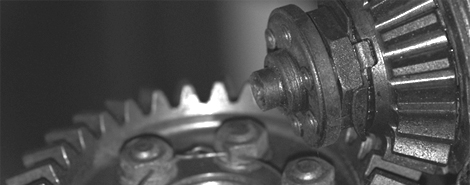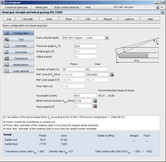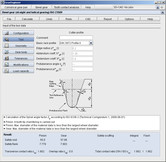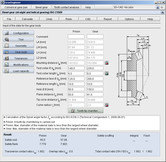GWJ Technology GmbH
Celler Straße 67 - 69
38114 Braunschweig
Deutschland
Fon: +49 (0) 531-129 399 0
Fax: +49 (0) 531-129 399 29
Mail: info@gwj.de
Celler Straße 67 - 69
38114 Braunschweig
Deutschland
Fon: +49 (0) 531-129 399 0
Fax: +49 (0) 531-129 399 29
Mail: info@gwj.de
Bevel gear
This software module allows to calculate and optimize straight and helical bevel gears. The bevel gear module contains the geometry calculation according to ISO 23509 for different forms of tooth depth to determine and create the real tooth form including profile shift modification, tooth thickness modification, backlash and crowning. In addition, the module includes the calculation of the load capacity according to ISO 10300.

Feature Overview
- Geometry of straight and helical bevel gears according to ISO 23509 and
DIN 3971 - DIN bevel gears: tip cone, root cone and reference cone intersect in a common point (Gleason)
- Klingelnberg bevel gears: tip cone, root cone and reference cone are parallel (constant tooth depth)
- Standard depth: root cone and reference cone intersect in a common point (Gleason/Konvoid)
- Consideration of profile shift and thickness modification
- Bevel gear pairs with shaft angle equal and unequal 90°, without offset
- Tool data can be specified individually
- Calculation of transverse contact ratio, overlap contact ratio and total contact ratio based on virtual spur gear toothing
- Turning dimensions with lengths of cone and angles, calculation and direct input of mounting distance
- Suggestions for backlash according to Klingelnberg or Niemann, backlash can be defined individually
- Determination of the tooth depth, tooth thickness and chordal tooth thickness
- Allowances according to DIN 3965 for deviations of several parameters; shaft angle and deviation of axis intersection
- Consideration of lead crowning
- Load capacity calculation according to ISO 10300
- Integrated material and lubricant database
- Detailed calculation report in HTML and PDF format
- Output of CAD data: 3D STEP/IGES





